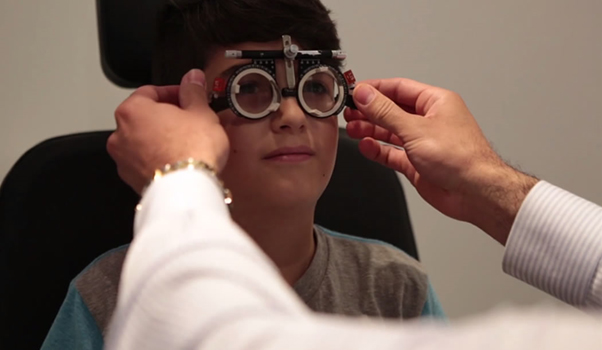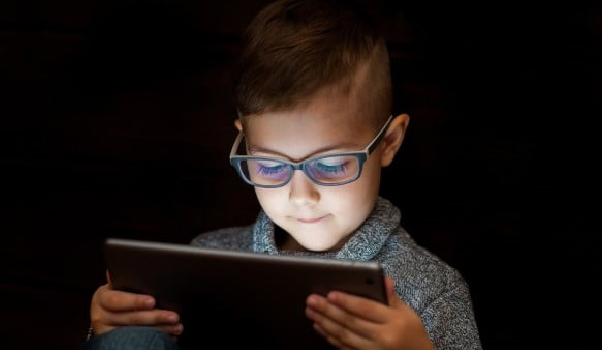"We believe every interaction with our patients is an opportunity to serve".
Myopia, or nearsightedness, is a common refractive error of the eye where distant objects appear blurry while near objects remain clear. In a myopic eye, the light rays from distant objects do not focus correctly on the retina - the light-sensitive tissue at the back of the eye, often because the eyeball is too long or the cornea is too curved.
Although myopia can affect people of any age, it often begins in childhood or adolescence, making early detection and management crucial for long-term visual and overall well-being.

Why Myopia Matters
By 2050, it is estimated that nearly 50% of the global population will be affected by myopia. This dramatic rise is already drawing comparisons with other non-communicable diseases like diabetes and hypertension due to its growing health, economic, and developmental burden.
Myopia is not just a matter of blurry vision. When left uncorrected or inadequately managed, it can lead to:
1. Degenerative changes in the retina and optic disc
2. Social and psychological impacts due to visual limitations and stigma
3. Reduced academic and developmental outcomes in children
What Causes Myopia?
The exact cause of myopia is not fully understood, but research suggests it results from a
combination of genetic and environmental factors:
1. Children with one or both parents with myopia are at a significantly higher risk.
2. Prolonged near-work activities, such as reading, studying, or excessive screen time,
may contribute to myopia onset and progression.
3. Insufficient exposure to natural daylight is also considered a significant factor.
Risk Factors for Myopia in Children
1. Family history of myopia
2. Intensive near work such as reading or screen use
3. Limited time outdoors or exposure to daylight
4. Ethnicity – Higher prevalence seen in East Asian populations

Treatment Options for Myopia
1. Corrective Lenses
1a. Prescription glasses are the most common and effective way to correct myopia.
1b. Contact lenses may be preferred by older children and teens for cosmetic or
comfort reasons.
2. Refractive Surgery
Generally not recommended for children as their eyes are still developing. However, in rare
cases involving other eye conditions or developmental concerns, surgery may be considered.
Types of refractive surgeries:
2a. LASIK (Laser-assisted in situ keratomileusis): A popular laser surgery that
reshapes the cornea to correct myopia and reduce dependence on glasses or lenses.
2b. Photorefractive Keratectomy (PRK): A surface laser procedure that reshapes the
cornea after removing the outer layer, suitable for thinner corneas.
2c. Clear Lens Extraction: A surgical procedure where the eye’s natural lens is
removed and replaced with an artificial one, typically used in high myopia cases
unsuitable for laser.
2d. Phakic Intraocular Lens (IOL) Implantation: An implantable lens is placed in
the eye without removing the natural lens, ideal for very high myopia or unsuitable
corneas.
How Does Myopia Affect a Child’s Life?
Children with uncorrected myopia may experience:
1. Academic challenges, such as difficulty reading the board or books
2. Physical discomfort, including frequent headaches, eye strain, or rubbing of eyes
3. Emotional struggles, particularly if they are teased for wearing glasses or feel
isolated
In India, social stigma surrounding spectacle use further complicates treatment adherence,
especially among children and teenagers. Parents may hesitate to accept the diagnosis or
delay seeking correction due to misconceptions or cost-related barriers. As the child grows
older, self-esteem issues arising from being singled out for spectacle-wearing end up
discouraging the wearer from periodic follow-ups and even discontinuing use.
Addressing the Barriers
To support children effectively:
1. Teachers and parents should be trained to identify visual difficulties and act early.
2. Peer sensitization programs can reduce stigma and boost acceptance of spectacle
use.
3. Access to affordable spectacles and routine eye check-ups should be prioritized.
4. Underlying conditions like amblyopia or developmental delays should be evaluated
before prescribing corrective lenses.
Myopia Progression Therapy
These treatments aim to slow the worsening of myopia in children:
1. Environmental changes: Encouraging outdoor play, reducing screen time
2. Specialized spectacles: Myopia control lenses designed to slow progression
3. Multifocal contact lenses: Shown to reduce progression in some children
4. Pharmacologic agents: Low-dose atropine eye drops (0.01%) are emerging as an
effective option with minimal side effects compared to higher concentrations
Myopia in children is more than just a vision issue—it's a growing public health concern. Early detection, proper education, lifestyle changes, and timely interventions can ensure that children with myopia lead healthy, confident, and productive lives. Collaborative efforts between parents, teachers, and eye care professionals are essential to safeguard the vision and future of the next generation.
Parent Corner: Common Questions Answered
There may be a larger amount of nearsightedness as children grow through childhood and early adulthood. In most children, the highest amount of myopia may be between six to ten years of age. Genetic predisposition, increased near-work activities like screen viewing, dim-light reading, and lowered exposure to natural sunlight also play a role in increasing myopia.
No, because the child’s eyes are still growing. Surgery may be considered only under special circumstances involving other eye or neurological conditions.
Myopia is considered "high" when:
1. The refractive error is -6.00 diopters or more, or
2. The axial length of the eye exceeds 26.5 mm
1. Retinal detachment
2. Glaucoma
3. Myopic maculopathy
4. Cataracts
Yes. Some steps include:
1. Increasing outdoor play time (at least 2 hours per day)
2. Limiting screen time and ensuring proper lighting while reading
3. Using prescribed interventions like atropine drops or myopia control lenses
1. Low-dose atropine drops
2. Specialized glasses or multifocal contact lenses
3. Orthokeratology (Ortho-K): Overnight lenses that reshape the cornea temporarily
4. Lifestyle changes like outdoor time and reducing digital eye strain


